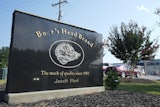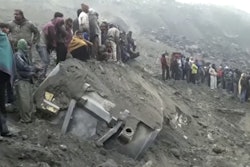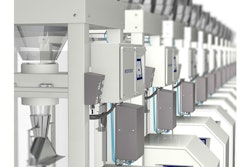Like a chameleon, safety practices take on a different appearance in industrial settings every day around the world. One day safety is seen in the form of regulatory requirements or standards for usage. Another day it manifests itself as physical procedures or building and maintenance updates.
A good chameleon is king at blending seamlessly into its surroundings – appearing as part of the very fabric of its environment. And that’s how safety should be in any industrial facility.But how does safety in your plant or facility move from an item on a checklist to become a basic principle of your workplace culture? Unfortunately, there’s no silver bullet. But making safety the main focus of your culture can be done, transforming daily operations from a procedure on paper to actual habits and behaviors.
In 2012, safety was something talked about fairly regularly at RETTEW, an engineering company that provides safety consulting services for industrial operations. At that time, the firm had one employee dedicated to overseeing internal safety procedures, a position similar to an Environmental Health and Safety Manager at a plant. RETTEW decided to bring on a team of employees to expand its safety consulting arm as it expanded its business. As the team began to grow RETTEW’s safety consulting service offering to clients, it also began to deepen RETTEW’s internal safety focus. The team’s goal was to move safety from being a purely reactive approach, to employees proactively recognizing and eliminating hazards.
Every business has to manage a plethora of changing and sometimes conflicting priorities: production, downtime reduction, product quality, and delivery time. Safety should be added to that list of priorities – and an expectation set that safety is non-negotiable, so much so that each employee won’t compromise on it.
“It’s similar to how you value your family,” said Luke Lazar, RETTEW’s Director of Safety Consulting. “You won’t compromise.”
Lazar and his team set out to take RETTEW through a revolution – moving safety from a handbook on the shelf to a keystone of its culture.
The Path Through
How do you revolutionize an internal safety program? Like anything else, Lazar says, you start with the “low-hanging fruit.” For RETTEW, that involved reviewing and rewriting the existing safety policies, in partnership with Human Resources.
Next, RETTEW moved on to reformatting its regulatory-required trainings. The firm invested in an online training tool to post, quiz, and track participation in monthly safety trainings for staff. At any time throughout the month, all employees must review the materials and pass a short quiz. Monthly training assignments not completed are automatically reported to supervisors for accountability purposes. Several years in, dozens of safety procedures now exist in this user-friendly system, which can be reused or repurposed for other internal safety initiatives. Over time, and with employee feedback, the content has also been improved to be more engaging and relevant to actual on-the-job scenarios. This employee feedback was key, as enabling employees to make suggestions and help with decisions builds buy-in and provides momentum in adopting a culture of safety.
Once the basic foundation of an updated safety program was in place, RETTEW shifted its focus to expanding safety awareness, reporting, and analysis. How did the firm know what to tackle first?
“You strategize to address what you know is problematic,” Lazar said. “Similar to how you would approach plant maintenance renovations.”
In reviewing its safety metrics, RETTEW identified a clear trend among reported incidents: many positions within the company required a large percentage of employees to drive company vehicles, and most incidents occurred when backing up. The fallout from these incidents included vehicle and property damage, occasional employee injury, increased insurance premiums and deductibles, and an overall increase in the number of safety incidents.
In response, the company adopted a forward-first parking policy, requiring all employees to back into a parking space on company property and client job sites, to allow for safer, facing-forward exiting.
This change didn’t take place overnight. In fact, forward-first parking continued to be an outlier policy and not uniformly adopted as a standard throughout the company. Then one day, during a high-level corporate meeting. RETTEW’s President, Mark Lauriello, abruptly stopped the meeting. He looked everyone in the room straight in the eye and directed each person to walk outside and immediately correct their parking to conform to policy. From that day forward, leadership enforced the policy, significantly reducing vehicle incidents. In turn, this change engrained an important safe habit in more than 300 employees, increased safety at office and job sites, and decreased insurance and vehicle maintenance costs.
Gaining leadership support for any safety initiative is a driving force in beginning to change company culture. Employees truly see and appreciate the difference between company management just giving lip service to policies versus those leaders guiding the adoption of safety standards by actually “walking the walk and talking the talk” themselves.
At an industrial plant site, approaching risk reduction by using the right equipment and having the right physical protection is a good first step that can yield immediate and significant results. Having continual conversations about safety can also help build an atmosphere focused on safety at your facility.
For RETTEW, building a culture of safety had two prongs: how it was integrated in the field at job sites, and how it was built into everyday office behavior and practices. In the field, the long-used Job Safety Analysis (JSA) forms underwent a major change to become more efficient and easy to use. Today, RETTEW safety personnel make random site visits, auditing the JSAs and handing out gift card rewards to employees who pay attention to hazards and risk. In the office, a “safety minute” was added to the beginning of every meeting. Initially, staff struggled to think of a safe practice to share, so the safety team worked with the company’s in-house communications staff to create a collection of quick reference “flash cards” to help. Over time, the reliance on these cards became less and less, as staff now intrinsically know how to lead a safety discussion at the beginning of group meetings. With both the JSA and safety minute, making the required process as user-friendly as possible generated quick results.
It's important to remember there is never a point in time when being safe is a completed task – there’s always opportunity for continuous improvement. RETTEW created a “who to call” list for reporting safety incidents, and over a period of months continued to streamline the process. At first, employees typically had to call multiple numbers on the list until someone answered. Now, every employee has a card on their key ring with RETTEW’s Safety One-Call number, which rings multiple people at once. For safety incident reporting, the firm assembled a team to investigate the root causes of each incident and develop action steps to ensure a more positive outcome in the future.
What’s most important is the firm’s change in its approach to pursuing a culture of safety. In the past, it was reactionary – always in response to an incident. Today, it’s evolved into proactively thinking about hazards and risk before an incident occurs, and taking steps to remove or mitigate them.
In 2015, RETTEW achieved a major milestone in its safety metrics – a year with zero recordable incidents. However, the company continues to add features and streamline processes to keep risks at a minimum for a safe and productive workforce.
“You have to be relentless in pursuing safety,” Lazar said. “We’re starting to see safety as a peer-to-peer integration, where everyone on a site or in an office setting is making sure to identify hazards and reduce risk. That’s when you know it’s becoming part of your culture.”






















